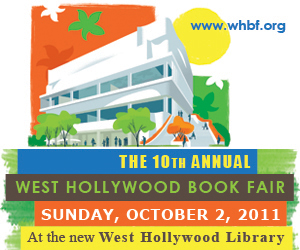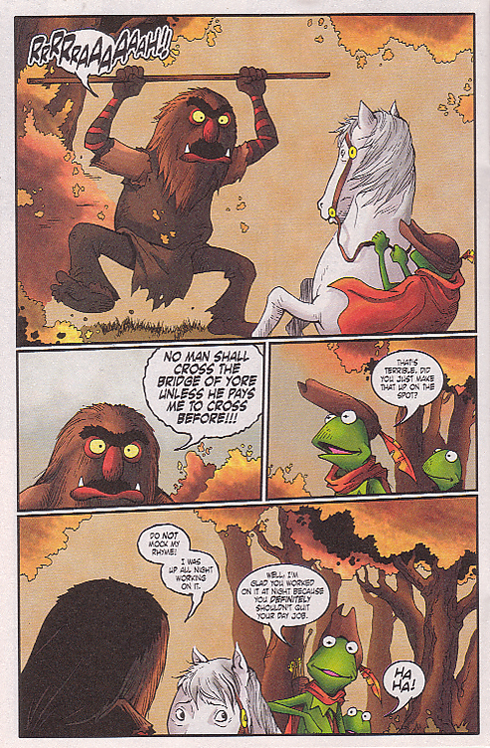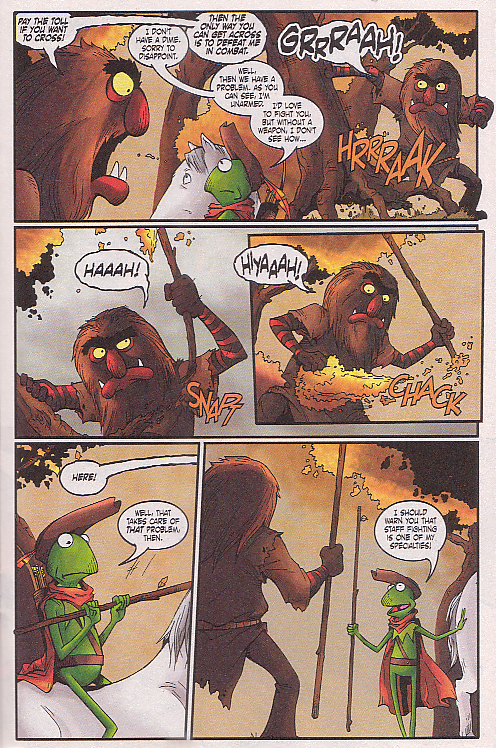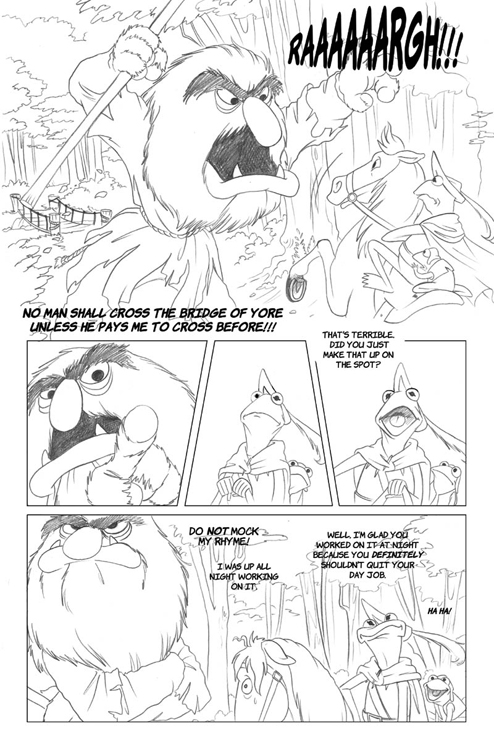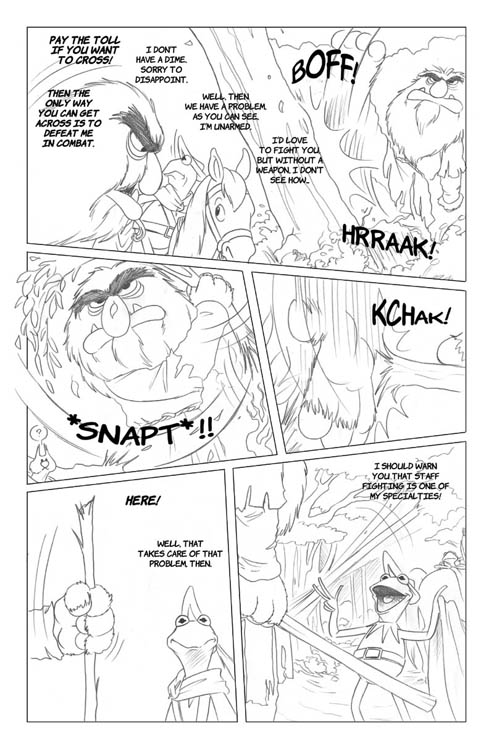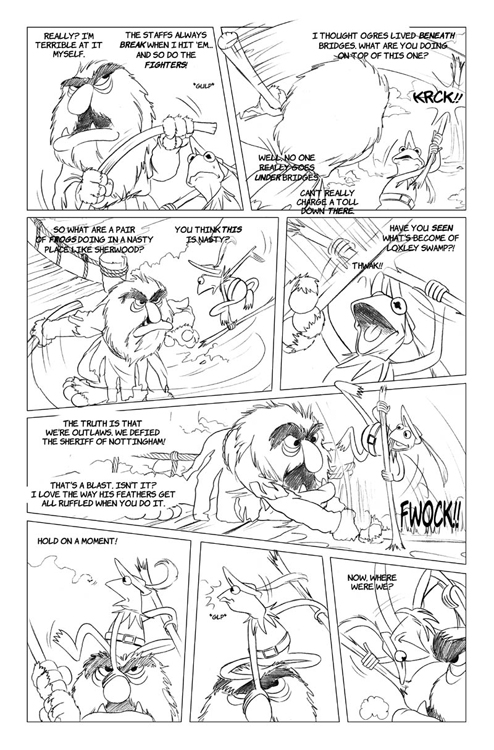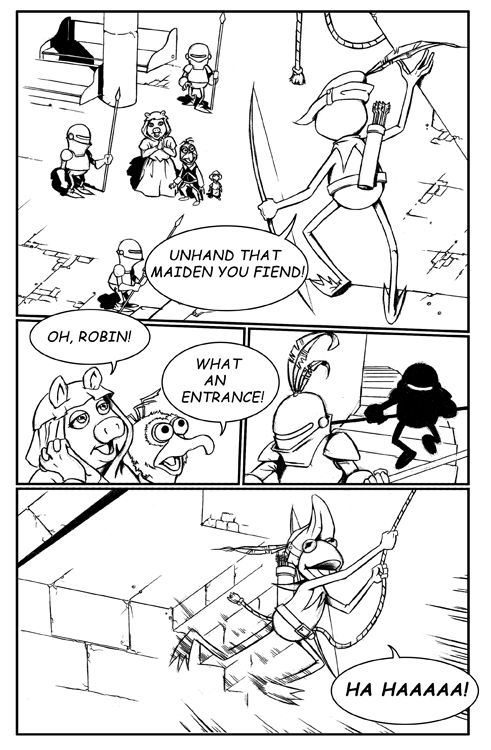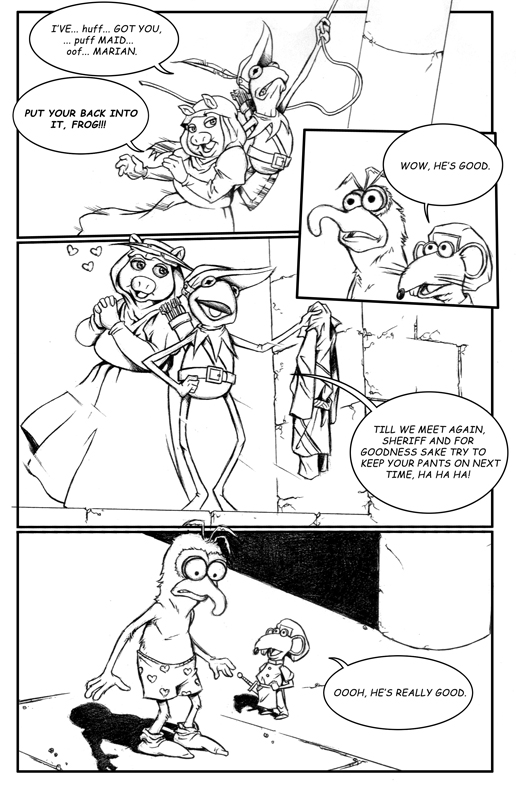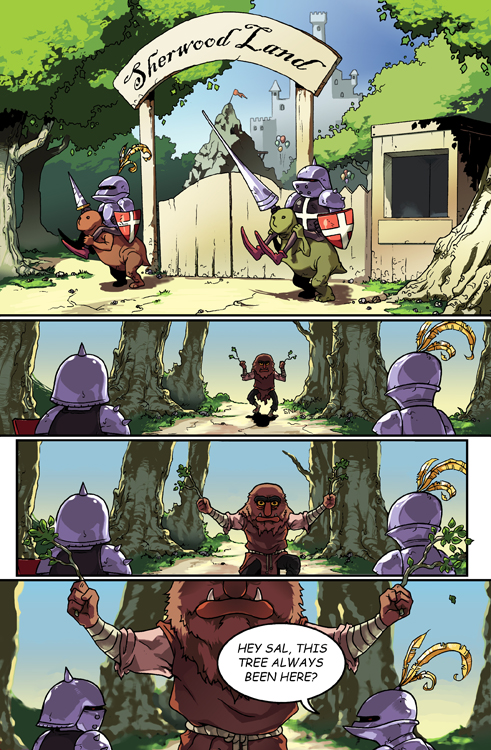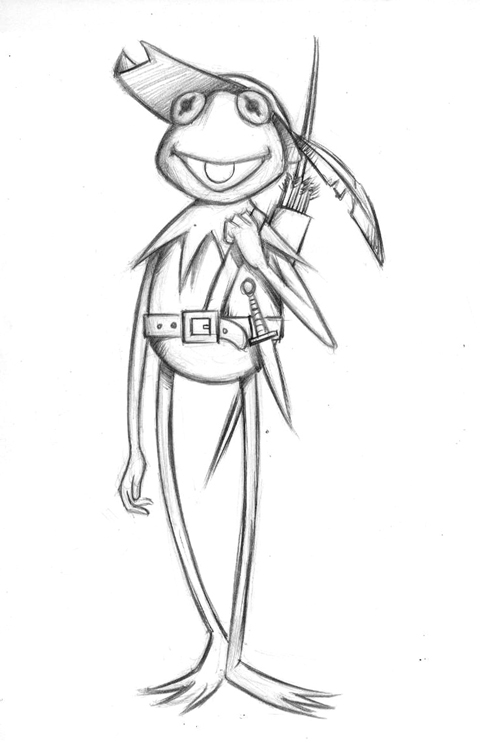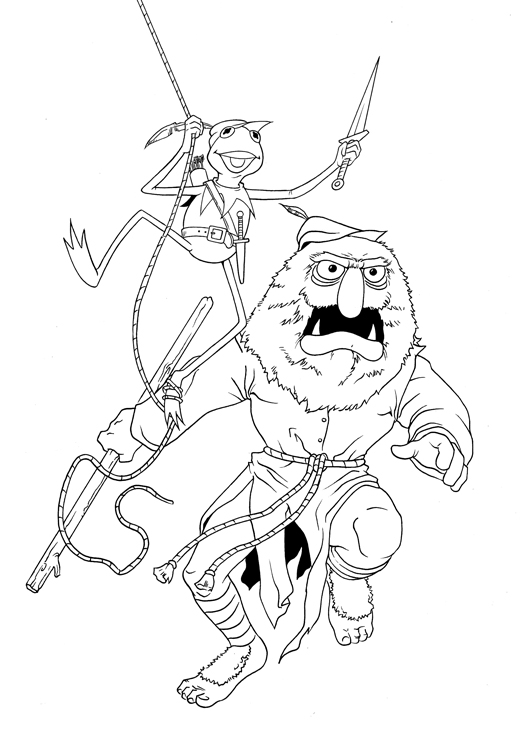Recently, I was putting together some writing samples for a job application when I came across a blog entry I’d written back when I was still editing manga at Tokyopop. Near the end of my time there, all Tokyopop editors were asked to create and maintain a blog on the company’s newly redesigned website. Considering we were being asked to do this while also overseeing a full slate of books each month, not everyone was the best at the maintaining part. However, I saw it as an opportunity to directly connect with fans and hopefully sell some of them on the new original manga titles I was working on.
I tried to update my editor’s blog at least a few times each month, usually with some thoughts on a series I was editing or some preview pages from one of my original titles. However, once I strayed a bit from that formula and wrote a pretty lengthy entry offering some advice to fledgling comic book and manga creators. That entry, which I called “So You Want to be a Manga-ka,” went on to become the second most viewed page on the website. (I believe the most widely viewed page was a poll about which Naruto character was the cutest.)
There’s no longer a tokyopop.com, and most of the content that I’d written for my old blog has evaporated into the Internet ether. However, I did manage to back up my “So You Want” entry, and figured it couldn’t hurt to repost it here, in case there’s anyone out there who may benefit from reading it. While it was largely written for the manga community and uses a few terms specifically aimed at them (like “manga-ka”), everything in it applies to artists and writers interested in creating Western comic books as well. If I were to write an article like this today, I’d use different terms, but my thoughts and advice on what it takes to create graphic novels would be pretty much the same. Enjoy!
So You Want to be a Manga-ka
There are tons of very good blog entries on this website offering advice and direction to aspiring artists. So many, in fact, that the thought of putting together my own never crossed my mind until recently. Even when it did, I initially brushed it off, simply because I’m not sure what more I really have to say. However, after receiving a message from an artist asking me for a few suggestions, I began rethinking the issue. After all, most of the art advice blog entries that I’ve read are written by other artists. As far as I know, none of my fellow editors have chimed in and blogged about what makes a good manga artist. Perhaps it’s worth hearing the editorial perspective if you’re interested in drawing manga professionally. After all, if your goal is to get published by TOKYOPOP, we’re the people you’re going to have to impress.
There is one caveat, however. Editors are every bit as different as the artists they work with. I’m by no means claiming to speak for every editor out there, or even every editor at TOKYOPOP. All of us look for different things when we evaluate a new artist. However, I do believe there are a few essentials that we can all agree on, and that’s what I’m going to write about here. A lot of aspiring artists say they dream of becoming a manga-ka, but what does that really mean? What does it take for someone to achieve success as a manga or comic book creator? Well, it takes a good many things, and after a little thought and a lot of Mountain Dew, I believe I’ve hit on most of the essentials.
1. You must be dedicated. If you want to be a manga-ka, this one probably seems like a sure thing. I’m sure you believe you’re dedicated to your art and manga. But are you really? Each volume of original manga that we publish boasts a minimum of 160 pages of sequential art, and takes most artists anywhere from nine months to over a year to complete. If your manga series runs for three volumes, that’s nearly 500 pages of art you’ll be responsible for creating, and around three years of your life that you’ll be devoting to your manga. Sure, it’s easy to feel enthusiastic and dedicated about your manga when you’re just getting started, but after two years of drawing the exact same characters and illustrating the story you outlined and conceived ages ago, are you still going to be that dedicated to it? Or are you going to find yourself getting bored and wanting to work on other things? You’d be surprised how many people find themselves falling into the second category. Make sure you don’t.
2. You must be fast. As I just said, each volume of manga consists of at least 160 pages of art. If you can only complete a page a week, then it’s going to take you over three years to finish a single volume. That’s not practical. While there’s no hard and fast minimum number of pages you MUST be able to do each week, if you can’t at least manage to complete one volume’s worth of manga within a year, it’s unlikely that we’ll be able to publish your manga. As a manga-ka, you need to be able to complete solid pages at a relatively quick clip.
3. You must be consistent. This is every bit as important as being fast (and maybe even a little more so). If you’d like to be a manga-ka, consistency is essential, and it’s not as easy as you may think. Do your characters look different in every panel? Do they look like different people when you draw them in profile or from less-common camera angles? Does their height change throughout the series? Do articles of clothing and jewelry you’ve given them disappear and then reappear throughout your manga? Consistency is essential, and while you’ll have an editor to watch your back when it comes to character details, they can’t do your job for you. Your characters and settings have to stay consistent on every page of your manga, whether it’s page 1 or page 387.
4. You must be technically proficient. Yes, there’s a LOT more to art than just technical proficiency. That goes without saying. However, the importance of knowing art fundamentals should also go without saying. When I do portfolio reviews, I find myself pointing out the same three problems over and over again: anatomy, perspective and visual storytelling. If you want to draw comics or manga, you must–I repeat–MUST know the fundamentals of anatomy, perspective and visual storytelling. How you learn these things can vary. Whether you’ve learned them from art school, community college, books or web tutorials really doesn’t matter to me. What DOES matter is that you do know them and know them well. And practicing them is really the only way you’re going to get to know them, my friends. I realize that refining anatomy and perspective in your art is not very fun, but the end result will be greatly worth it. Quite frankly, knowing your fundamentals is what makes the difference between a professional unpublished artist and someone who’s just doing this stuff for kicks when they’re tired of playing video games.
5. You must be dependable. As an editor, I’m have nearly two dozen books that I’m responsible for. I don’t have time to hunt down creators to ask why their pages weren’t turned in on time. Dependability is essential for a manga-ka, and you’d be surprised how often I’ve found it lacking in the artists that I’ve met. As a manga-ka, you’ll be required to work with your editor on creating a schedule that includes deadlines for all of your pages. It’s crucial that you know what pace you can realistically work at when you do this because once that schedule is agreed upon, that’s it. Those are your deadlines. Your publisher is going to expect you to make them. If you don’t, there are people within the company that your editor is going to have to answer to. Those people are not going to accept excuses from your editor, so you’d better believe that your editor isn’t going to accept them from you. Remember, folks, manga publishing is a business. A company’s livelihood depends partially on the book you’re creating for them. It’s easy to lose sight of this when you’re corresponding with one single company representative, but believe me, there’s MUCH more at stake, and missing your deadlines creates much bigger problems than you realize. And for God’s sake, never pull a disappearing act! As your editor, I’m going to expect to be able to pick up the phone and call you during the day if I need to, or to get a response to any email I send you within a day. I get really frustrated when I can’t. It’s the sign of an unprofessional artist.
6. You must be collaborative. This is one that may not apply to all publishers, but it certainly applies to TOKYOPOP. Our books are not created in a vacuum. While the writers and artists are primarily responsible for what you see when you pick up a TOKYOPOP original manga title, they’re not the only people involved. Your editor’s job is to help you tell the best story you’re capable of telling in the time you have to tell it, and for him or her to fulfill that role, you need to listen to them and take what they’re saying to heart. They’re not interested in rewriting your story or “destroying your vision.” They’re interested in making your vision as strong as possible. That also goes for the designer that puts together your cover and even the reps responsible for marketing and selling your book. Everyone involved in working on your book all has the same goal in mind: they want it to be successful, both critically and commercially. While your opinion is extremely important and it’s crucial to “stick to your guns” when the situation truly dictates it, you’d do well to hear what others have to say.
7. You must be patient. A year ago, I probably wouldn’t have included this one, but things have changed over the past year and the reality of the current market necessitates it. As manga has become increasingly more and more popular, the number of hopeful manga-kas has risen, and with this rise in quantity has also come a rise in quality. That means that we’re no longer in a situation where anyone with talent and a great pitch will immediately catch our eye. Further escalating the problem is the increasing amount of global manga available and in development. Editors throughout the manga industry are busier than they’ve ever been, so patience has become quite a virtue among creators. Don’t be surprised if it takes months to hear back on a pitch you submit to a publisher, if you hear back at all. And don’t be surprised if it takes several pitches, or if you’re told to re-pitch an idea in “about a year.” It’s extremely rare for a proposal to get greenlit entirely as is immediately after it’s pitched these days, and I don’t see that changing any time soon.
8. You must be talented and creative. I’ve grouped these two together not because they’re less important than the above traits, but because they’re the two that I feel are already the most widely known. Everyone knows you need talent and creativity to create manga, and you know what? It’s hardly in short supply. Talent and creativity are essential. However, it’s the seven other traits I’ve mentioned here that will allow you to stand out from the rest of the hopeful manga-kas and enter the realm of the professional ones.
Still there? Then you’ve definitely shown you’re interested in creating manga professionally. Now let’s see how serious you are about it. I welcome any comments and questions below from artists, whether they’re published or not. I promise that I’ll do my best to address them. Otherwise, go and create! After all, the first part of making manga is to actually go and do it!

